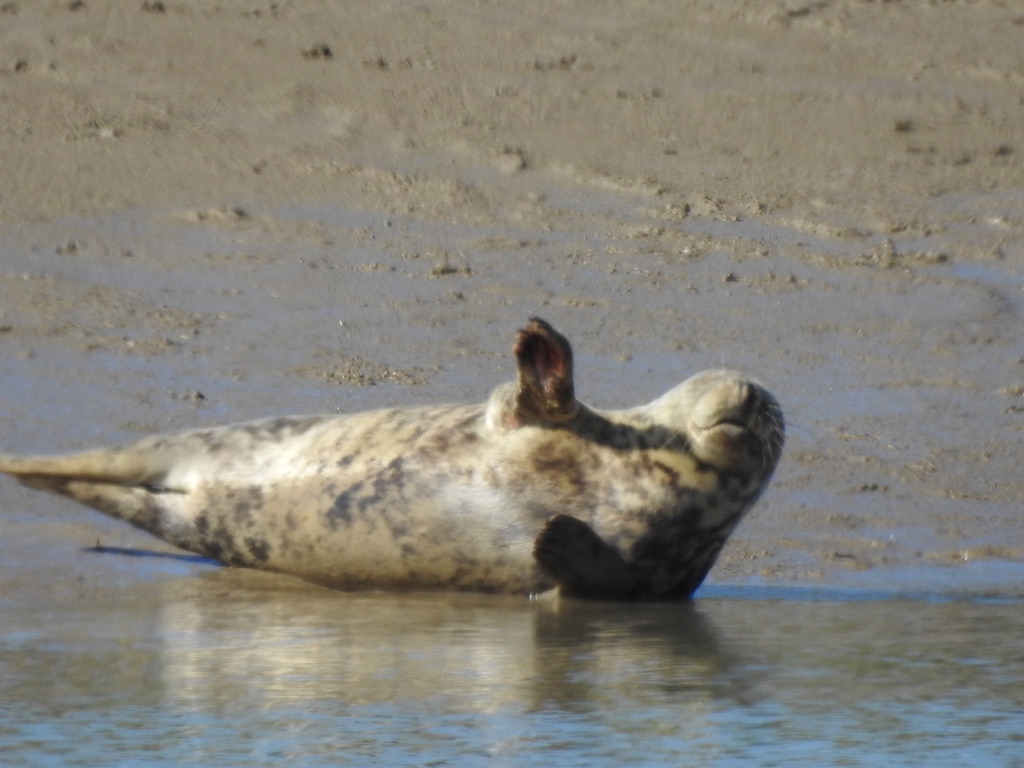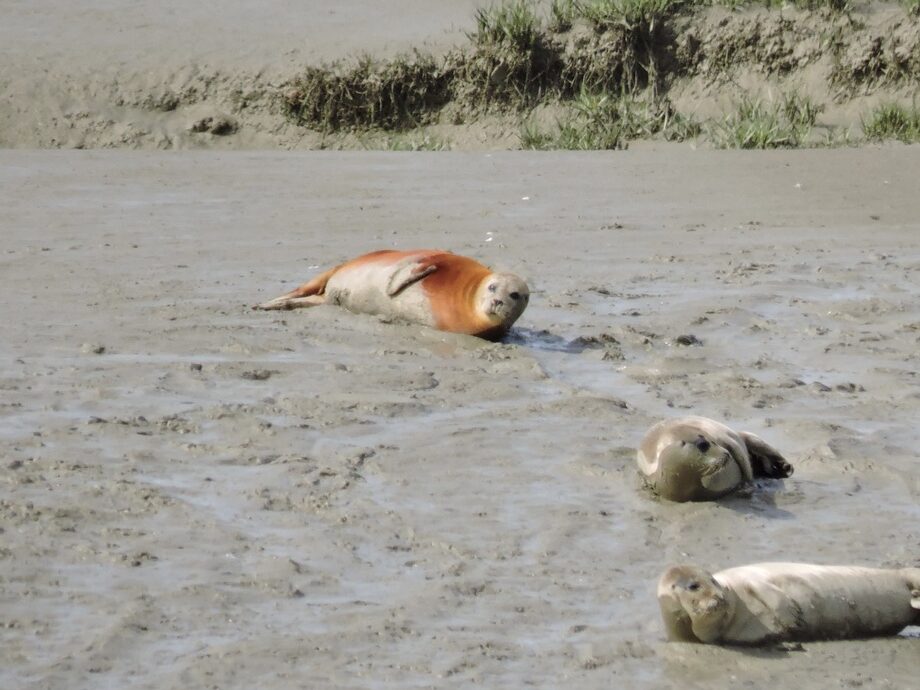When you have a tricky dog sometimes you need to find new walks, not necessarily solitary but certainly less busy and hectic than my beloved Winchelsea. I say tricky because she can be loving and cuddly and playful with 10 cocker spaniels then all of a sudden spaniel number 11 is told off for doing heaven knows what. I’m a seasoned dog owner and know full well to look for the signs, which is great advice from the best dog trainer locally, Crick Hooper of Rye, when there are signs to see. Or I wasn’t blinking when the sign was presented to me.
And so it was that tricky dog of mine that led me to walk to Camber Sands, past Rye Watersports, on New Lydd Road, Camber and the harbour master’s cottage and past the hidden gem of beach basking seals on the opposite side of the river Rother as it flows towards the sea. That was about four or five years ago now and ever since I have always seen seals in that very same spot, rain or shine, morning or evening. I often take my camera and although an avid nature lover and member of Sussex Wildlife Trust I started to read more about seals.

By no stretch of anyone’s imagination am I even vaguely an expert, yet I can tell you they are harbour seals also known as common seals, although I did see a grey seal pup there once, and actually they are less common than the grey seals so perhaps shouldn’t be called that. Although the UK does support half of the overall European harbour seal population.
They also have 45 to 50 whiskers on each side of their snout with approximately a staggering 1,500 nerves at the base of each of those whiskers, so that they can hunt blind in murky water and quickly gather information about their surroundings. It is said that they can sense a fish over 35 metres away, dive to depths of 90 metres and hold their breath for about 28 minutes.
However, I cannot tell you why I saw one solitary red seal pup among a total of six pups and five adults. I can tell you that experts told me it is thought to be due to the diet. Yet, I am not sure I believe that as it was one of 11 in total and presumably, they were all eating the same fish rich food, so any high copper or iron minerals would have been passed on to all of them or at least more than just the one. And as you can tell from my picture this one was doing rather well too. I saw this pup every visit, about three or four times a week, for about four months. I like to think it was the flamboyant gene that did it. Any and all suggestions welcome.
Image Credits: Kim Zanes .



